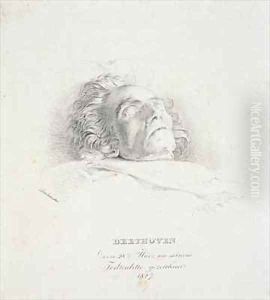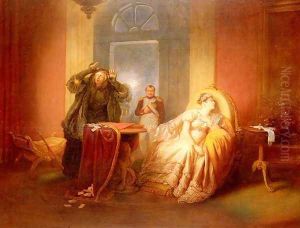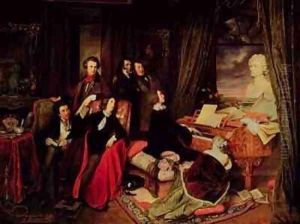Josef Franz Danhauser Paintings
Josef Franz Danhauser was an Austrian painter, known for his contribution to Biedermeier style, born on August 19, 1805, in Vienna, Austria. He was part of the early 19th-century European art movement that emphasized simplicity and modesty, a reaction against the grandeur of previous styles. Danhauser's work is emblematic of the Biedermeier period, characterized by intimate, homely scenes that often contained a moral or satirical subtext. His father, Johann Peter Danhauser, was a renowned furniture maker and Josef initially intended to follow in his footsteps, but his artistic talents soon led him down a different path.
After studying at the Academy of Fine Arts Vienna, where he was influenced by the works of the German Romantic painter Friedrich Overbeck, Danhauser embarked on a career that saw him painting portraits, historical scenes, and genre works depicting everyday life. His paintings are notable for their detailed depiction of interior settings, often featuring elegant furnishings that reflect his background in furniture design.
Danhauser's most famous work, "Liebesbrief" (The Love Letter), epitomizes the Biedermeier style's focus on the simplicity and inwardness of domestic life. Despite his success as a painter, Danhauser's life was marked by tragedy, including the premature death of his wife and several of his children. These personal losses are reflected in the melancholic undertone present in many of his later works.
Josef Franz Danhauser's career was cut short when he died on May 4, 1845, in Vienna, at the age of 39. Despite his relatively brief career, Danhauser left a significant impact on the Biedermeier movement and is remembered for his unique ability to capture the spirit of his time through the lens of domestic intimacy. His works remain celebrated for their historical and cultural significance, offering insight into the social norms and everyday life of early 19th-century Austria.






